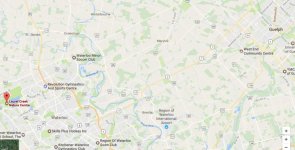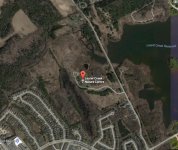I'm keeping a 2017 list this year and I wondered if I should put exotic birds on it. I wouldn't put them on my life list, but I figured a year list is different. Today I went to the Huntington Beach Central Park (California) and found some Orange Cheeked Waxbills. Do I put them on the list, or no? Thanks.
Hi Sue - welcome! As a SoCal birder, I can commiserate with this conundrum of introduced exotics... Apologies in advance for the length of this post.
It's totally up to you on your personal approach, but here's how your options break down:
1) All inclusive list. This would be the only list to include the Orange-cheeked Waxbill - which is seen regularly in SoCal. My primary year list is all inclusive, and it's based on the concept that regardless of official status and slow-moving evaluation of these populations' sustainability to thrive overall, you as an observer are experiencing and encountering an individual bird which was born, functions, survives and likely propagates in the wild. I wouldn't count confirmed escapees, or zoo or farm birds, but pretty much everything else to me is fair game.
Another argument for using this list type is that it will make it easy to correspond to your
eBird submissions, which exclude only "domestic" / farm influenced birds (certain peafowl, geese and monstrous mallardian descendants) - all other exotics are included as "countable" on your eBird list. This is not by accident - it's in fact very purposeful in order to track the pervasiveness, the range, and the growth of these exotic populations, with the sentiment that this data may one day contribute to granting them "self-sustaining population" status by the powers that be (CRBC or ABA).
2) Official status list. This is probably the more popular option for many birders, because it's based on a strict set of rules and parameters set forth by an authority. And for most of North America, the ABA (American Birding Association) is the go-to resource for this, in conjunction with their local state rare bird committee. However, most North American birders are not confronted with the massive exotic populations of SoCal and Florida.
Birding SoCal can get sticky quickly when you start dissecting the vague discrepancies between the ABA and the CRBC (California Rare Bird Committee). Great example here is Nanday Parakeet - which is an ABA accepted species, but not recognized by CRBC. The ABA's evaluation stems from the Florida population, but their "criteria for determining establishment of exotics"
(
http://listing.aba.org/criteria-determining-establishment-exotics/) is absolutely applicable to the Nanday population of Malibu / Santa Monica Mountain range. Which, I might add, is unique amongst SoCal exotics for surviving off native plants, not introduced ones.
Additional internal hypocrisy with the decisions these committees include their "accepted" status of grandfathered-in absurdities like Spotted Dove in Los Angeles (which is barely holding on as a sustainable population), and the pervasive Red-crowned Parrot, while other predominant parrot/parakeet species of the greater LA area remain absent (Yellow-chevroned Parakeet and Mitred Parakeet come to mind first, but other
Amazona parrots like Yellow-headed Parrot may be good examples because they are function in the same niche - and flocks! - as Red-crowneds).
The benefit of this approach is, of course, an even playing field when comparing numbers with other birders who follow the ABA list, or requirements for submitting a list for competition (big year, anyone?).
3) Purist non-introduced list. I'm including this option in for fun because I think it's an underserved twist on listing: Non-introduced species only. While your "official" ABA or CRBC list will grant exotic immunity to your run-of-the-mill Rock Pigeons, European Starlings, House Sparrows, and yes even Spotted Doves and Red-crowned Parrots - this NIB list doesn't live in a gray area. It's native birds and native birds only.
I was inspired to keep this list by John Sterling's County Birders club (
http://www.sterlingbirds.com/county_birders.htm), in which California's top traveling birders compete on their life lists to see the most non-introduced species in every county of California (there are 58). Maybe it's blind to certain realities of our modern birding, but it struck a chord with me in a historical context - how would my list compete before colonizers brought all these ridiculous birds that have in many cases negatively impacted North American wildlife.
----
In the end, my personal solution? I keep all three of the above lists to get the best of all worlds. But that's also because I'm a spreadsheet madman with OCD tendencies. Have fun with it, and do what suits you best.







